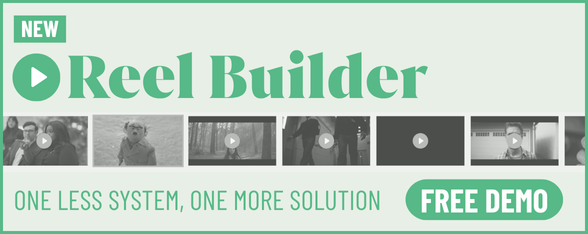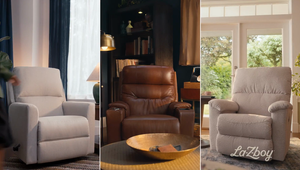
Creativity Squared: Learning to Live in the Mess with Yama Rahyar

Yama Rahyar is a creative director at RPA, where he leads the team developing ideas and campaigns for the agency’s newest clients. An academic-turned-copywriter, he believes that brands need “systems, not stunts” from their creative agency partners. In this piece, Yama shares how learning to live with obsessive-compulsive disorder shapes his creative process.
Person
It’s the morning of an important presentation and I’m nagging myself over the fact that one of our platform write-ups is one line longer than the other four.
Let me backup.
People used to tease me for making our whole wing of the office smell like Clorox Wipes every Friday afternoon.
Let me backup a little more.
During my freshman year of high school, I developed a ritual. After school I would immediately go to my room, open the window, dust the entire room with a feather duster and then close the window. Later, I would add vacuuming to the routine. Later, cleaning spray and a cloth for glass surfaces. By the time I moved away, I had taken over cleaning duties for the entire house.
That’s how it started. I needed to clean before I could think or work. Especially right-brained work. As I would walk around cleaning, my mind would be forming and sorting ideas. Finally I would sit down, with every surface gleaming and smelling sharp and antiseptic, and the words would just pour out onto the still-wet, just-wiped-down keys of my laptop.
At the time, no one complained about my habits or found them unusual. It can be hard to find fault with neatness and productivity.
Years later, I started to think more sceptically about these behaviours. I went to a doctor and explained the things I would do and the thoughts I would be thinking as I did them. He wrote down a phrase: obsessive-compulsive disorder.
“Disorder.” Not a positive quality. Not an endearing quirk. But a flaw in the operating system. An intrusive mindset, eating into my time, telling my brain what to care about and prioritise. My own thoughts and perceptions lie to me.
It’s been a decade and half since that diagnosis. Like other anxiety disorders, OCD symptoms vary from person to person. For some, it’s a devastating, paralysing condition that brings all of life to a standstill. For me, it’s a manageable constant. A responsibility to be monitored and kept in check with healthy practices. But it’s also who I am, and inseparable from how I think and ideate.
Process
Now, there’s an obvious tension between OCD and creativity. The most important parts of the creative process are sloppy and chaotic. You’re given a tidy little brief, and the first thing you do is take it apart. Make a total mess of the thing. Pursue wild tangents. Stare into space and let your mind wander. Allow unrelated and incoherent fragments of thoughts to bounce against each other. Amid the chaos, two or more abstract notions or phrases or images collide in an unexpected way. And an idea is born.
But you need the mess. You need to be okay with the mess, and to resist the urge to tidy it up too soon before the idea can sharpen and find its shape. Which doesn’t come naturally for me, because my instincts revolt against mess. A part of me wants to finish the sentence, form the rest of the thought, or at least clean up the wall of sticky notes so they’re evenly spaced. Urges as unhelpful as needing to dust the room before doing my homework.
With some practice and some priceless mentorship, I’ve gotten better at living with the chaos. I wouldn’t say “loving” it, because I don’t. But I understand its value. I’ve learned not to rush it. I’ve seen how ideas can shrivel and become stunted when you do, or flourish when you don’t.
Ironically, I do believe the tendencies that made me a so-so junior and mid-level creative make me a much better team lead. Now, I get to watch other people make the mess. My role is to identify and nurture those seedlings of order amid someone else’s chaos. I was born to clean up other people’s stuff.
Product
Advertising is a means to an end. It’s not art, and it can’t be pure entertainment. To me, that means that creative advertising is only valuable to clients if it’s holistic and systematic.
That’s why I’m not very interested in things like Super Bowl spots: big, thrilling, spectacular one-offs. I’m interested in architecture: an idea that acts as a blueprint for replicating itself across media.
Press
It’s my belief that clients need systems, not stunts. It’s how my brain works, and also how the creative craft used to work. So I’m unapologetically out of step with the industry’s creative output right now. With few exceptions, the most high-profile ideas of the day are one-and-done.
How do I think clients can “get the best out of their agencies”? I don’t know — maybe insist that we abstain from award shows until the work that takes home trophies better reflects the real work that real agencies produce. We might be the only industry that awards completely unrepresentative examples of our core product. Imagine if they gave the Academy Award for best picture to a really beautiful T-shirt.















